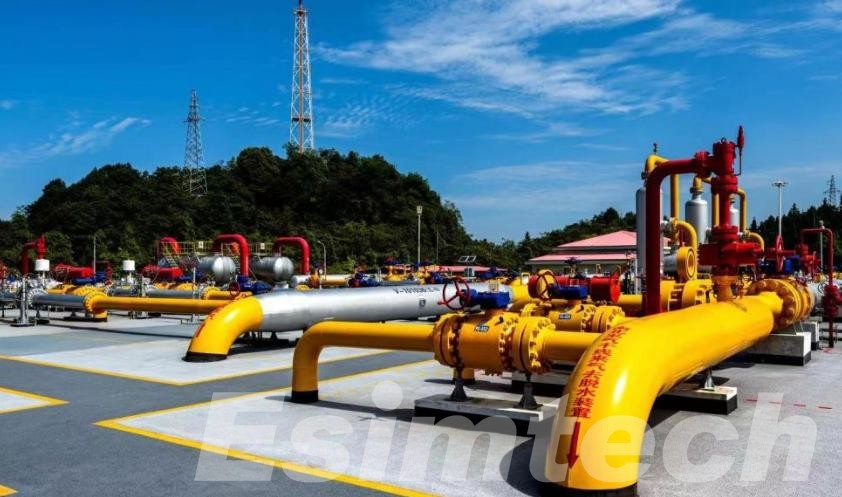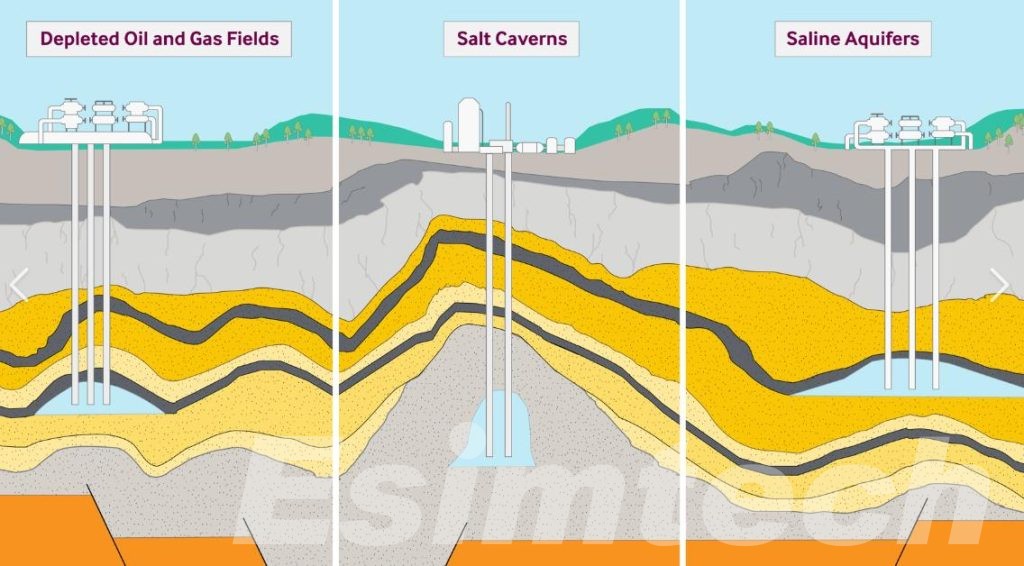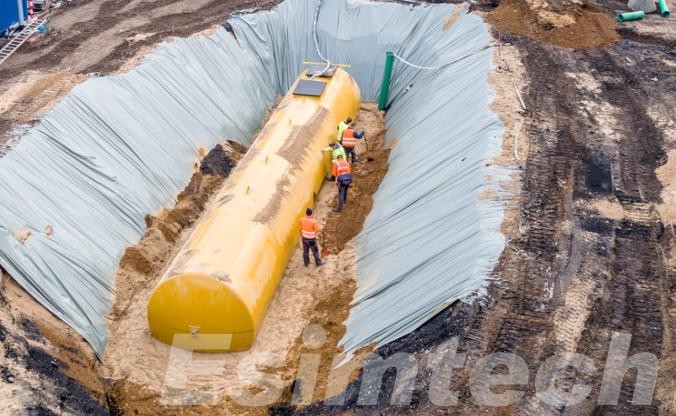The Role of Underground Gas Storage in Ensuring Energy Security
Energy security is a priority for many countries, especially as global energy demand rises and supply chains face disruptions. Natural gas is an important part of the energy mix and ensuring its reliable supply is a must. One of the most effective ways to manage the supply and demand of natural gas is underground gas storage (UGS). In this article, we will take a closer look at the role of underground natural gas storage facilities in ensuring energy security.
What is Underground Gas Storage?

Underground Gas Storage (UGS) refers to the process of storing natural gas in underground geological formations for future use. These formations, such as depleted oil or gas fields, salt caverns, and aquifers, naturally have the capacity to hold gas. The stored gas is injected into these formations during periods of low demand or when gas prices are lower. It is then retrieved when demand spikes, ensuring a steady and reliable supply during peak times.
UGS helps manage seasonal fluctuations in natural gas consumption, providing a backup when supply disruptions occur or when gas consumption outpaces production. Essentially, it acts as a buffer, balancing supply and demand to prevent shortages. The gas is stored under pressure to remain stable until needed, making UGS a critical component of energy security by ensuring that natural gas is available when required, especially during cold winters or periods of high consumption.
Types of Underground Gas Storage Facilities
Underground Gas Storage

Underground gas storage facilities come in different forms, each suited to specific geological conditions and regional needs. The main types of storage are:
- Salt Caverns: Salt caverns are formed by dissolving salt deposits in underground layers to create hollow spaces. These caverns are highly suitable for gas storage due to the natural impermeability of salt formations, which effectively prevent gas from escaping. Salt caverns are particularly valuable for short-term storage, as they enable quick injection and withdrawal of gas. They are commonly used to address seasonal demand spikes or to ensure a steady supply during disruptions in gas availability.
- Depleted Gas or Oil Reservoirs: These are former gas or oil fields that have been depleted of their resources. After production ceases, these reservoirs are repurposed for natural gas storage. They are typically the most cost-effective storage solution because the geological formations have already proven their ability to safely contain gas. Additionally, the infrastructure originally built for gas extraction can be adapted for storage purposes, further reducing development costs.
- Aquifers: Aquifers are underground layers of rock that contain water and can also be used to store natural gas. Developing storage in aquifers is generally more complex and costly compared to depleted reservoirs or salt caverns. However, they can be a valuable option in regions where other storage formations are not accessible. While less commonly used, aquifers still play an important role in the global gas storage network.
The Importance of Underground Gas Storage for Energy Security

Underground gas storage is vital for maintaining energy security, especially in areas that depend on natural gas for heating, electricity generation, and industrial purposes. Storing gas for later use ensures a steady, reliable supply during periods of high demand or when supply disruptions happen. Here are three key reasons why gas storage is crucial for energy security:
Mitigating Supply Disruptions and Geopolitical Risks
Natural gas markets are susceptible to disruptions caused by natural disasters, geopolitical tensions, or supply chain challenges. Events like pipeline failures, extreme weather, or conflicts with major gas-exporting nations can lead to sudden supply interruptions. Underground gas storage acts as a crucial safety net, ensuring consumers have access to gas during uncertain times.
- Emergency Backup: During crises—such as natural disasters damaging infrastructure or political unrest impacting supply routes—gas storage facilities provide a dependable backup. Stored gas can be used to replace lost supplies from regular sources.
- Supply Security During Disruptions: Whether caused by pipeline damage or regional conflicts, gas storage ensures that essential services like heating and power generation can continue, even if primary supply routes are compromised.
- Buffer Against Import Dependency: Many countries depend on imported natural gas, making them vulnerable to disruptions from key exporting nations. Sufficient storage allows these countries to maintain a stable supply even if imports are delayed or reduced due to geopolitical factors.

Managing Seasonal Supply and Demand Fluctuations
Natural gas consumption follows seasonal patterns, with demand increasing during colder months for heating and decreasing in warmer months. Gas storage helps energy providers manage these fluctuations by storing excess gas during low-demand periods (typically in summer) and drawing it out when demand peaks in winter.
- Stabilizing Winter Demand: Since natural gas is widely used for heating in winter, storage facilities ensure an adequate supply to meet the seasonal surge in demand. Without sufficient storage, consumers could experience gas shortages, especially during cold spells.
- Preventing Supply Strain: Without storage, the energy system could be overwhelmed by sudden demand spikes. Gas storage serves as a buffer, ensuring that sufficient gas is available when it’s most needed, preventing supply shortages and disruptions.
- Ensuring Reliable Supply: Storing gas for winter ensures that energy companies can maintain a consistent supply, even if production or transportation faces temporary disruptions. This is particularly important in areas where domestic production cannot fully meet the winter demand.
Supporting Market Stability and Price Flexibility
Gas storage plays a crucial role in stabilizing energy markets by helping manage price fluctuations. The ability to store gas when prices are low and withdraw it when prices are high provides energy companies with greater flexibility in managing their reserves, leading to more stable prices for consumers.
- Price Stability: Gas prices can be volatile, influenced by factors like weather events, demand surges, and supply constraints. By tapping into stored gas during high-demand periods when prices are typically higher, storage facilities help mitigate the impact of these price spikes.

- Cost Savings for Consumers: When energy suppliers purchase gas during periods of low prices and store it for future use, they can pass these savings on to consumers. This helps make natural gas more affordable and provides a buffer against price increases during demand surges.
- Encouraging Market Efficiency: Gas storage allows energy companies to optimize their purchases and withdrawals based on price trends, improving overall market efficiency. This not only fosters competitive pricing but also enhances the management of gas resources, benefiting both suppliers and consumers.
In summary, gas storage is crucial to energy security as it ensures a reliable supply during seasonal demand changes, protects against supply disruptions, and helps stabilize gas prices, contributing to a more resilient and efficient energy market.
Economic and Environmental Benefits of Underground Gas Storage
Underground gas storage doesn’t just support energy security—it also offers significant economic and environmental advantages.
Economic Benefits
- Cost Efficiency: Storing gas during low-demand periods or when prices are lower enables energy suppliers to reduce costs. This allows them to access stored gas when demand rises and prices increase, resulting in more predictable and stable energy costs for both consumers and businesses.
- Job Creation and Infrastructure Development: The construction, maintenance, and operation of underground gas storage facilities generate various employment opportunities, ranging from construction workers to engineers. These projects contribute to local economies, and the infrastructure supporting these storage systems can also bring benefits to nearby communities.

- Energy Market Stability: Gas storage contributes to overall market stability by helping to balance out supply and demand. By ensuring that excess gas can be stored and retrieved during times of shortage or high demand, UGS reduces the volatility of energy prices, providing more consistent pricing for consumers and suppliers alike.
Environmental Benefits
- Reduced Emissions from Power Generation: By using stored natural gas instead of turning to more polluting energy sources like coal, underground gas storage helps lower overall carbon emissions. During periods of high demand, using stored gas ensures that cleaner energy is available, reducing the environmental impact of power generation.
- Efficient Use of Resources: Underground gas storage enables a more efficient use of natural gas. Rather than wasting gas during periods of low demand, it can be stored and utilized during peak times, ensuring that this valuable resource is fully leveraged while minimizing waste.
- Supporting Cleaner Energy Transitions: UGS plays a key role in integrating renewable energy sources like solar and wind into the grid. Since renewable energy production can be intermittent, stored natural gas can be used to stabilize the grid when renewable sources are unavailable. This reduces reliance on less sustainable energy options and supports a cleaner, more reliable energy system.
Summary
Underground gas storage (UGS) ensures energy security by balancing gas supply and demand, managing price fluctuations, and mitigating disruptions. By storing gas in depleted reservoirs, salt caverns, and aquifers, UGS provides a reliable solution for maintaining a stable energy supply. It also offers economic benefits, such as cost savings and job creation, while supporting environmental goals through efficient resource management. As energy needs evolve, UGS will continue to play a key role in a sustainable energy system.
